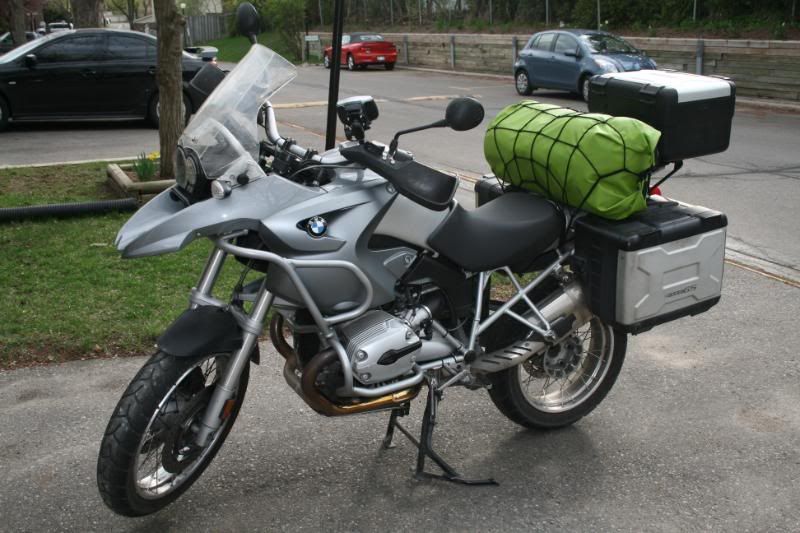What do you guys bring with you?
Basic 3-man tent with vestibules. When they say 2-man tent, it only fits two sleeping bags shoulder-to-shoulder, so a 3-man gives you room for bags, gear. A vestibule is nice to shelter dry bags, boots and stuff that you don't want to bring into the tent with you.
Almost all the campsites have a picnic table, but we're foreseeing doing some camping in the wild, so we bring a couple of Kermit chairs, we've used them a couple of times when we're down at the beach, they're fantastic and fold up real small.
We have a small multi-fuel stove, a set of cooking pots, and sporks. Personally, I hate sporks, they neither function well as a spoon or a fork, but since the wife is carrying the kitchen, I don't have a say. I just dribble soup down my chin and have stuff fall off the end of my spork and just suffer in silence...

Also where do you find campgrounds, nearest KOA, or something else? What's the average fee for a campsite as well?
Provincial and national parks are well marked on the map, however this is your costliest campsite. Most run around $37 and you do get good amenities but what you are paying for is the ability to hike, fish, and hang at a beach. If you're not going to do this and just want a place to sleep, look for an RV park. These are the cheapest and can run anywhere from $12-25/night. You're going to want to ask for an unserviced tent site, so you don't get running water or electricity right at your site, but you'll get flush toilets and showers for that price somewhere close by anyway.
RV parks aren't well marked on the map since most of them are private, you can Google them along your route, but I find that on major highways, you will always see a sign for a campsite every 50-100 kms, so I wouldn't worry about it too much. Around 5-6PM we usually start looking for the signs.
KOA is a middle-ground. They have good advertising, have a great online and paper map of all the sites and if you get their loyalty KOA card, you get a 10% discount. After tax and with the discount, most sites are $30, so a bit more expensive than the RV parks. We've only stayed in 3 or 4 KOAs and what we've found is that their facilities and cleanliness seem to have to conform to a corporate standard, so you'll always know what to expect when you pull in. Canadian KOAs are not as plentiful as in the US, there it seems you can't ride 50 kms on any highway and not see a KOA sign.
We met a guy in Wawa who wrote a
great article on budget travel, his aim is to sleep for free every night. He stays in churchgrounds, cemeteries, gazebos, people's lawns and says that as long as you're out early enough in the morning, people don't seem to complain too much. Granted you don't get a hot shower, but if you alternate this with an RV site every other night, you could probably bring your average accommodation cost to about $10/night.
In the US, state parks have free camping and also showers on site, so we anticipate our accommodation costs will be negligible after leaving Canada.


















